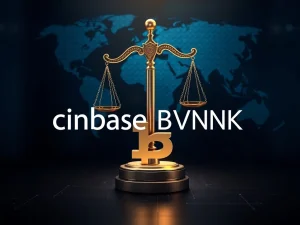Blockchain Africa: How Innovators Are Revolutionizing the Continent

While headlines in the West often focus on speculation and regulation, the story of Blockchain Africa is profoundly different. It’s a narrative of necessity, innovation, and grassroots adoption, driven by communities tackling pressing challenges head-on.
African Innovators Leading the Way
Young African innovators are not waiting for permission; they are actively leveraging blockchain technology to build solutions tailored to local needs. This movement started organically, often with students and freelancers facing practical problems:
- Receiving digital currencies from abroad.
- Converting foreign earnings into local currency.
- Dealing with limited banking infrastructure.
- Navigating distrust in centralized financial systems.
Unlike centralized systems like Kenya’s E-Mpesa, which improved local access but struggled with international payments and off-ramping digital assets, decentralized alternatives offered a viable path.
The Rise of Crypto Africa: Beyond Speculation
The early adoption of Crypto Africa was fueled by a fundamental need for value storage and easier transactions, not just speculative trading. Individuals began holding stablecoins not primarily for spending, but to preserve wealth against currency instability.
The process of converting crypto earnings into usable local funds was often complex, forcing individuals to become adept peer-to-peer traders. This hands-on approach demonstrates how communities found practical use cases for blockchain even before formal infrastructure was widely available.
Blockchain Adoption: Solving Real-World Problems
The impact of Blockchain adoption extends far beyond finance on the continent. Innovators are applying the technology to critical sectors:
Energy Insecurity:
- In rural Zambia, excess power from mini hydro stations can be used for Bitcoin mining.
- This generates revenue, turning potential waste into a sustainable energy loop.
- The system is self-sustaining and reduces energy waste.
Connectivity Gaps:
- Decentralized WiFi hotspot networks are emerging in underserved areas.
- Community members can share bandwidth using blockchain.
- They are compensated instantly and transparently without middlemen.
- The process is fair and trackable, fostering trust and participation.
Navigating Decentralized Finance Africa
While peer-to-peer crypto usage highlights the organic growth of Decentralized finance Africa, the formal regulatory landscape is still developing. Governments in countries like Kenya, Nigeria, and South Africa are proceeding cautiously, prioritizing consumer protection over rapid implementation.
Despite the regulatory “standby mode,” the underlying factors driving blockchain adoption remain strong: a clear need for better financial tools, energy solutions, and connectivity.
The technology exists, and the need is present. The key challenge now is bridging the gap between this grassroots innovation and broader mainstream adoption, potentially through clearer regulatory frameworks and scalable infrastructure.
Conclusion
The story of blockchain in Africa is a powerful testament to human ingenuity. Driven by necessity rather than hype, African innovators are leveraging decentralized technologies to build practical solutions that address fundamental challenges in finance, energy, and connectivity. As Blockchain Africa continues to evolve, its potential to transform lives and economies across the continent is becoming increasingly evident, showcasing a future built on decentralization and community empowerment.







